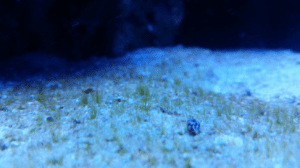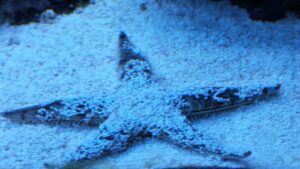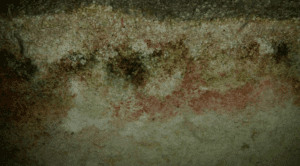Maturation time refers to the duration required for a DSB to become fully established and for the bacteria within it to mature. This process involves the colonization of the sand by various types of bacteria, each playing a specific role in the filtration process.

During the initial weeks, the DSB may undergo an unstable phase as the bacteria begin to colonize the sand. This can lead to fluctuations in water chemistry, including spikes in ammonia and nitrite levels. Consequently, it is essential to closely monitor these levels during this period and manually and delicately move the first cm of the DSB.I personally find it counterproductive to include starfish or other benthic predators in the first few months.Furthermore, during the maturation, I feed the dsb with a pinch of granulate every other day.

While the bacteria continue to colonize the sand, they develop into an intricate bacterial ecosystem made of several successive layers of bacteria. Each of the layers plays a particular role in the densification process.
The stacks of a DSB consist of various bacterial species that collaborate in breaking down the waste products and other pollutants in the water. A description of the various layers and their roles below is given:
1. Oxygenated Zone:
The upper layer (surface layer or oxygenated zone) is the lowest 1-2cm of the sand bed and it is inhabited by aerobic bacteria that are located with its immediate environment provided with the oxygen needed to survive. These bacteria decompose organic matter, and combine them into nitrogen compounds. Furthermore, this layer has the effect of avoiding the formation of anaerobic environment in the sand bed.
2. Anoxic Zone:
The intermediate layer, also known as the nitrate reduction zone, is located below the near-surface layer and is 2-5 cm deep. Species of bacteria present in this layer are facultative anaerobes (i.e., they can grow under aerobic and anaerobic conditions) . Bacteria in this layer contribute to nitrate reduction to nitrogen gas and its removal from the water column.
3. Denitrification Zone:
The deep layer/denitrification zone is located at the bottom of the sand bed, with a depth of 5-10cm. This layer contains the anaerobic bacteria that do not need oxygen to live at all. These bacteria break down nitrate compounds and convert them into nitrogen gas. Bacteria in this layer also reduce sulfate to sulfide, a process that can be harmful to certain types of organisms. Due to this, maintenance of the deep layer should be avoided so as not to cause the release of toxic sulfide gas into the aquarium.
Additionally, there is a layer of sand at the bottom of the DSB that is not actively involved in the filtration process. This layer is widely referred to as the “dead zone” and it is highly desirable to minimize disturbing it where possible.

DSB is a powerful tool to remove the undesirable contaminants from a marine aquarium. Nevertheless, in order to ensure its full potential, understanding the maturation process and the function of the bed layers is of paramount importance. If you properly configure a DSB, track its progress, and keep it stable, you can establish a thriving aquarium ecosystem for the long term.
Please follow and like us:
